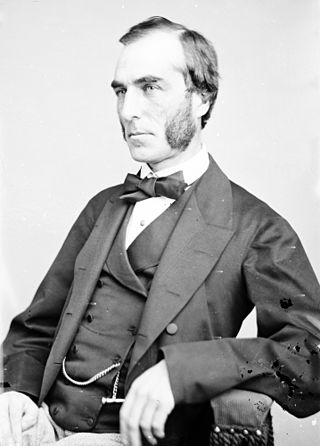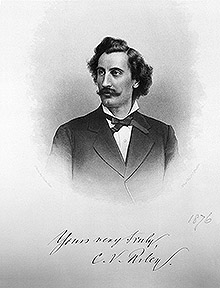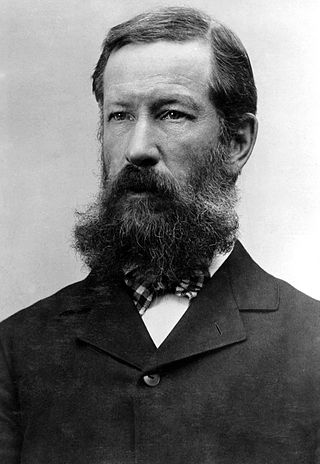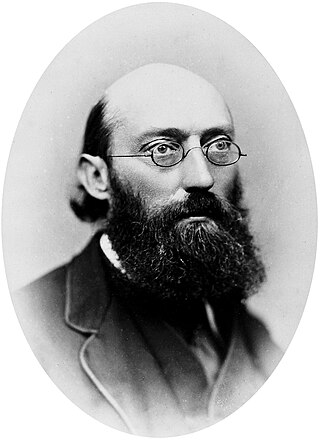Related Research Articles

Goldwin Smith was a British-born academic and historian who was active in both Great Britain and North America. From 1856 to 1866, he was a professor of modern history at the University of Oxford. Smith taught at Cornell University from 1868 to 1872, and was instrumental in establishing the university's international reputation, but left when it began admitting female students. He is the namesake of Goldwin Smith Hall at Cornell University, and was outspoken regarding his often controversial political views. Smith was a supporter of the Union during the American Civil War and a critic of imperialism. He was also opposed to the Irish Home Rule movement and women's suffrage, along with holding Anglo-Saxonist and antisemitic views.

Sir Grafton Elliot Smith was an Australian-British anatomist, Egyptologist and a proponent of the hyperdiffusionist view of prehistory. He believed in the idea that cultural innovations occur only once and that they spread geographically. Based on this, he traced the origins of many cultural and traditional practices across the world, including the New World, to ideas that he believed came from Egypt and in some instances from Asia. An expert on brain anatomy, he was one of the first to study Egyptian mummies using radiological techniques. He took an interest in extinct humanoids and was embroiled in controversy over the authenticity of the Piltdown Man.

Sir George Adam Smith was a Scottish theologian. He was the Principal of the University of Aberdeen between 1909 and 1935 and an important figure in the United Free Church of Scotland.

The Church of St Margaret, Westminster Abbey is in the grounds of Westminster Abbey on Parliament Square, London, England. It is dedicated to Margaret of Antioch, and forms part of a single World Heritage Site with the Palace of Westminster and Westminster Abbey.

Sir William Tite was an English architect who twice served as President of the Royal Institute of British Architects. He was particularly associated with various London buildings, with railway stations and cemetery projects. He was the Member of Parliament (MP) for Bath from 1855 until his death.

Winfield House is an English townhouse in Regent's Park, central London and the official residence of the United States Ambassador to the United Kingdom. The grounds are 12 acres (4.9 ha), the largest private garden in London save for that of Buckingham Palace.

Sir Paul Rupert Judge was an English business and political figure. He served as Chairman of the Royal Society of Arts, President of the Chartered Management Institute, and Deputy Chairman of the American Management Association. He also served as the Director General of the Conservative Party and a Ministerial Advisor to the Cabinet Office. He was educated at Trinity College, Cambridge.

Charles Valentine Riley was a British-born American entomologist and artist. He was one of the first individuals to use biological pest control and authored over 2,400 publications. He convinced Congress to create the United States Entomological Commission and was among the founders of the American Association of Economic Entomologists.

Henry Gannett was an American geographer who is described as the "father of mapmaking in America." He was the chief geographer for the United States Geological Survey essentially from its founding until 1902.
Charles Thomas Pearce (1815–1883) M.D., M.R.C.S., F.R.S., was an English physician and early opponent of mandatory vaccination. A member of the Royal College of Surgeons, fellow of the Royal Society and a Freemason, Charles was a homoeopath and surgeon, with an interest in medical astrology, vegetarianism, improved care for the mentally ill and the cessation of vivisection.

William Francis Ganong was a Canadian botanist, historian and cartographer. His botany career was spent mainly as a professor at Smith College in Northampton, Massachusetts. In his private life he contributed to the historical and geographical understanding of his native New Brunswick.

Henry Hicks (1837–1899) was a Welsh physician and geologist during the 19th century.
Frederick Baltimore Calvert was an English actor and academic.

Sir Robert Muir, FRS, FRSE, FRCP, FRCPE, FRFPSG was a Scottish physician and pathologist who carried out pioneering work in immunology, and was one of the leading figures in medical research in Glasgow in the early 20th century.
Francis Marbury (1555–1611) was a Cambridge-educated English cleric, schoolmaster and playwright. He is best known for being the father of Anne Hutchinson, considered the most famous English woman in colonial America, and Katherine Marbury Scott, the first known woman to convert to Quakerism in the United States.

William Brinton was an English physician.
Dr Robert Dundas Thomson FRSE FRS FRCP FCS was a British physician and chemist and a pioneer of public sanitation. He worked as an academic, medical officer of health and author.
Thomas Buckingham Smith was a lawyer, diplomat, antiquarian and author. He researched the history of early Spanish exploration and settlement in North America. Smith translated and published several important Spanish documents relating to this history.

Hugh Murray FRSE FRGS (1779–1846) was a Scottish geographer and author. He is often referred to as Hew Murray.

Sir George Buchanan, FRS was an English physician, epidemiologist and civil servant. He was a Fellow of the Royal Society, president of the Epidemiological Society of London (1881–1883), and Chief Medical Officer of the United Kingdom (1879–1892).